► New Aston Martin Vanquish unveiled
► Unashamedly un-hybrid V12 power
► Super GT coupe and Volante convertible
One of the greatest names in Aston Martin’s modern history has returned, and has been applied to a serious bit of kit. This is the new Vanquish, designed as the third chapter of Aston Martin’s revamped sports car line-up alongside the DB12 and Vantage. After the coupe was unveiled in September 2024, the Brit supercar brand has just unveiled its Volante convertible.
Aston Martin has started from the ground up with the new Vanquish, engineering a new version of its V12, a new architecture and introducing the brand’s newest infotainment and driving tech to the super GT. Rest assured, Aston Martin fans, this isn’t just a DB car that’s been breathed on like the DBS Superleggera.
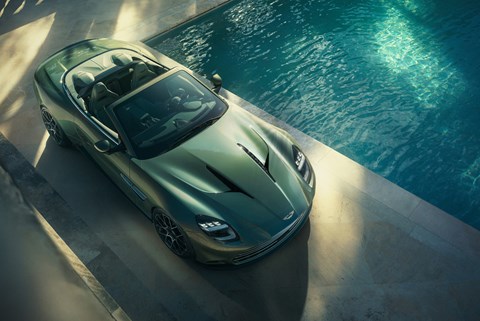
‘I just think it’s one of the best names in the business, and you know where you stand with it,’ says Aston Martin head of brand and product strategy, Alex Long. ‘With DBS it was basically a DB11… S. There’s no sub-explanation here.’
The name also makes a comeback after the original plan was to use it for the brand’s cancelled mid-engined supercar, first previewed by a concept back in 2019.
It needs a little explaining still – like the fact it’s not a hybrid…?
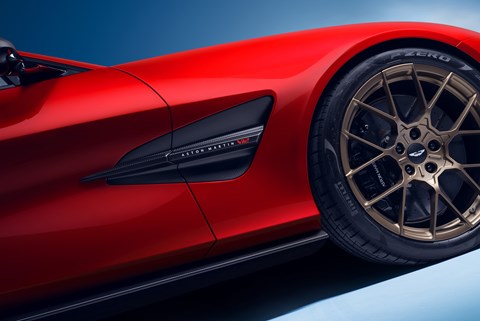
In this day and age, and whether some of us like it or not, it’s on-trend to electrify completely or, at least, hybridise. But here, with Aston Martin, the team and its engineers have made a case for continuing the use of the V12 – just as Ferrari has with the equally un-electrified 12Cilindri.
‘It took some convincing within the business to put money in the V12 cup and to say we’re keeping it at the top of the product range,’ adds Long, ‘because the other way to ease a business case is to say that we can add some volume via a middle car, but we feel we’ve got the performance envelope right here.’
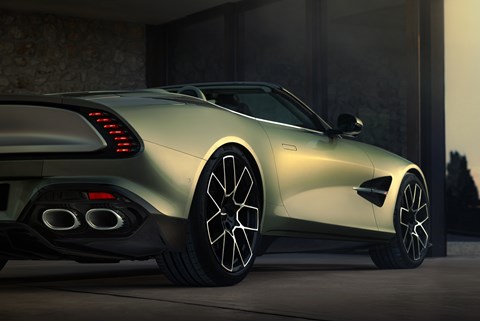
And that V12 happens to be the most powerful one fitted to an Aston Martin production car. This 5.2-litre engine isn’t the same as the one in the DB12 – a new block, strengthened conrods, reprofiled camshafts and new turbochargers all feature. And those new turbos include a ‘boost reserve’ function, which effectively increases boost pressure than what is usually needed by balancing the waste gate with the intake pressure and throttle inputs; when you go for full acceleration, the throttle snaps open and the excess pressure and fuel rush through the engine.
‘With every new car we bring, we want to be at the top of the category for power,’ says Long. And Aston Martin really has; the rear-driven Vanquish develops 824bhp and 738lb ft, good for a 3.3sec 0-62mph time (for the coupe, 3.4sec for the Volante) and a top speed of 214mph. That top speed also makes the Vanquish the fastest Aston Martin production car.
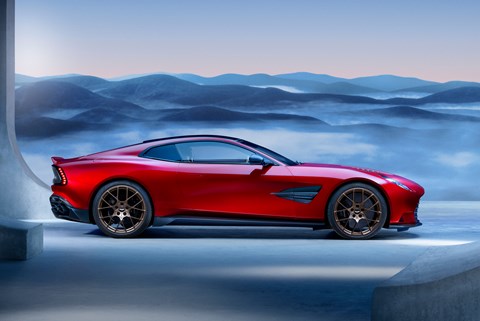
The DBS Superleggera that preceded it was also wildly powerful. And a bit of a handful. Which is something Aston Martin’s engineers have looked to minimise this time around.
So, as well as a super-long wheelbase – 80mm longer than the DBS – the new architecture is 75 per cent stiffer than a DBS 770 Ultimate due to new crossmembers and tougher engine bracing. That does add weight – the Vanquish is 1774kg dry, 200kg more than the 12Cilindri – but Aston Martin’s engineers have sought to correct that. The tougher bracing ‘gives you benefits when it comes to steering feel,’ says Simon Newton, Aston Martin’s director of vehicle performance. ‘When you load up the entire tyre contact patch as you steer, what you’re actually feeling is the front of the car bending in the right way. That extra stiffness really helps.’ Bilstein DTX dampers also standard, with Aston Martin giving the ones here their own calibration, and Pirelli P Zero 4 tyres are standard for the 21-inch forged alloy wheels, for example. Carbon ceramic brakes are standard, too.
Like Ferrari, Aston Martin has also gone down the digital route. An electronic differential features on the driven wheels – like the DB12 and Vantage – and the brand’s ‘adaptive slip controller’ includes varying steps of slackening the traction control. ‘Having that e-diff is what allows us to have a longer car [than the Vantage or DB12] that brings the benefits of high-speed stability, but we’re able to make something more agile than the outgoing model,’ adds Newton. ‘You can set the car up to be more agile and reactive at lower speeds than the previous car, then really lock it down higher up.’
What on earth is going on with that rear end?
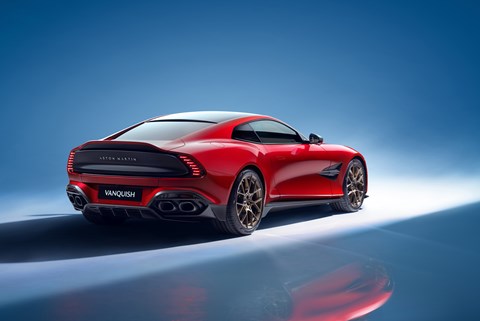
The whole car’s design is instantly familiar, with many of the brand’s common design cues interwoven with some fantastically intricate details. Like DB12 and Vantage, particular effort has been made not to introduce any aerodynamic design cues that look like they’ve been added on. Aston’s trad (and massive) grille arrangement is a bit more basking shark here with its sharp, piercing top lip and the car’s sculptured wheelarches give the whole car a muscular feel.
But yes, arguably the biggest visual step-change is that backside. It’s a blend of Valkyrie-inspired rear lights, upward flowing rear lip spoiler and a floating panel nicknamed the shield. Aston Martin’s designers, led by Miles Nurnberger, wanted to great a bit more visual drama, with the panel able to be painted or left in bare carbonfibre.
Oh, and for the Volante model, its fabric roof with its K-fold mechanism can open in 14 seconds and raise in 16 seconds at speeds up to 31mph.
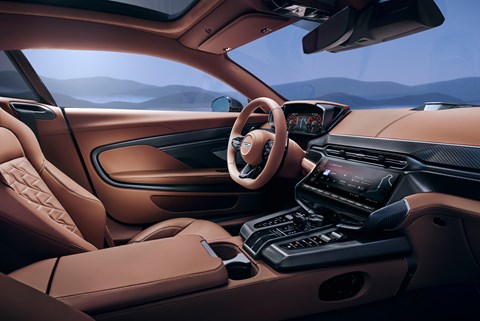
Inside, a lot of Aston Martin’s modern controls and new infotainment are applied inside – albeit in a different arrangement to DB12 and Vantage, as Nurnberger and his team look to create a little more differentiation between each of Aston Martin’s cars. The Vanquish includes something Nurnberger calls the ‘chrome stitch’ – a thin metal strip that’s designed to couple together different elements of the dashboard.
Oh, and this Vanquish is strictly a two-seater unlike previous flagship Aston Martin grand tourers. Instead, each car can be had with a bespoke luggage set that perfectly matches the interior.
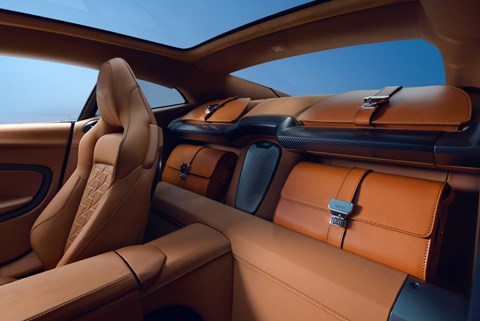
Can I have one?
You can, but you’ll need a lot of dosh. Aston Martin is only making 1000 per year – and that includes coupe and Volante convertible models – making the Vanquish a more rare car than the DBS Superleggera ever was. Prices are well north of £350k.
And that’s before you get to the Q specifications – something Aston Martin is looking to increase the amount of special versions with the new Vanquish.